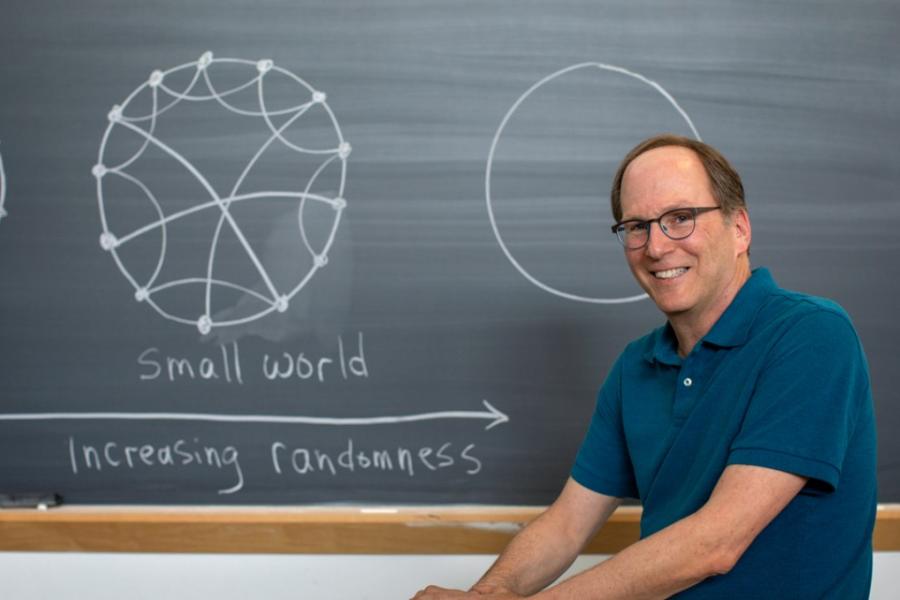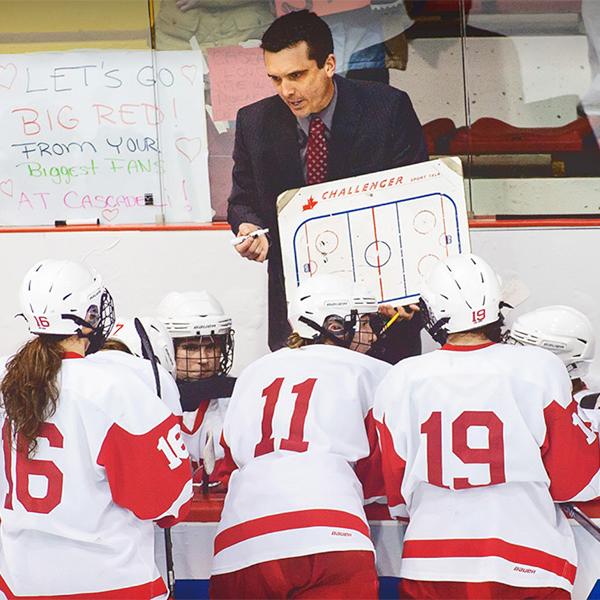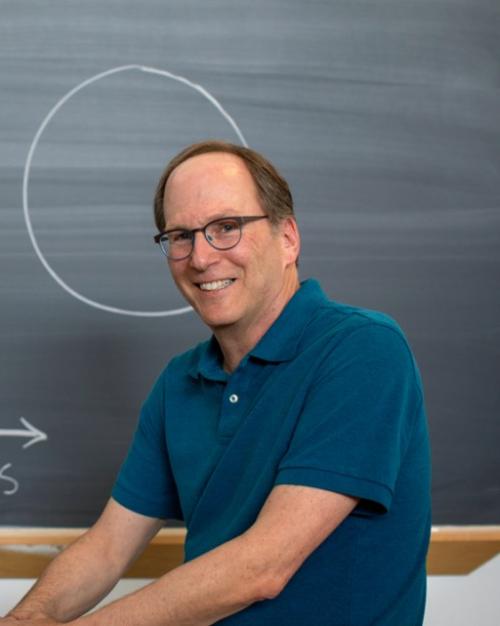More than 25 years ago, Professor Steven Strogatz and then-graduate student Duncan Watts, Ph.D. ’97, embarked on research so daring in its interdisciplinarity, and so broad in its reach, that at first they didn’t tell anyone about it.
The problem they were working on involved “six degrees of separation” – the idea that any one person in the world could connect to any other person through a chain of only six links, identified in 1967 by social psychologist Stanley Milgram. But Milgram didn’t explain the structure of these social networks and how such a large world, with more than 3 billion people at the time, could be made so small.
“We kept the project between us because of the examples we were using, and we were not experts in social science. We knew very little about the literature around Milgram’s small-world problem,” said Strogatz, the Susan and Barton Winokur Distinguished Professor for the Public Understanding of Science and Mathematics and Stephen H. Weiss Presidential Fellow in the College of Arts and Sciences. “So we were very naive. And we thought that would give us an advantage – that by being naive, we might ask unusual questions. And we wouldn’t go down the same path everybody else had gone down.”
They were right.
In 1998, Strogatz and Watts proposed a mathematical model that would not only provide a way of seeing and understanding a wide range of networks, but would mobilize scientific communities across disciplines to turn toward their study. The work, along with a few subsequent papers, ushered in the modern era of network science – the results of which are ubiquitous in today’s world.
“I look at papers that have had the most impact, and it’s those that have marshaled and mobilized tens of thousands of incredibly creative people,” said Jon Kleinberg, the Tisch University Professor of Computer Science in the Cornell Ann S. Bowers College of Computing and Information Science. “The power of network thinking is everywhere now – it’s in the systems we build, the online platforms, the way we reason about financial crises and global pandemics like COVID. That way of thinking in the community is really the lasting impact of this work.”
“Collective Dynamics of ‘Small-World’ Networks“ published in Nature on June 4, 1998 and was immediately picked up by major news outlets, including the New York Times, Discover Magazine, and Business Week. It’s been cited more than 50,000 times, and the ”Watts-Strogatz model” continues to be fundamental in any introduction to modern network science.
The main finding in the paper was that a large network could be made small very quickly with just a few random connections, or connections beyond those that are nearby or clustered. A disease might spread in a small community, but one or two people bringing it outside that community will have an outsized impact on the spread of the disease. Information can travel much more quickly and efficiently in the brain – or on the internet – with the introduction of a small number of connections outside a cluster of neurons or nodes.
The research came at a time when the interconnectedness of the world was increasing and becoming more felt – with the explosive growth of the internet, global markets and international travel, the latter of which enabled the spread of diseases like HIV.
“Everybody was starting to get the feeling in their respective disciplines that we have these gigantic networks that are at the root of all kinds of mysteries, but we didn’t know what these networks were like; they were too big,” Strogatz said. “We provided this abstract picture that was encapsulating what people see in a lot of real networks, but the paper was also successful because of its incompleteness. People could see all kinds of ways to improve what we did or try to apply it. It was a very stimulating, fruitful paper, partly because it raised more questions than it answered.”
Prior to this model, researchers had often resorted to classifying networks as either regular – totally symmetrical – or random, without a way of visualizing or quantifying the (much more common) middle ground.
“Theories in epidemiology at the time made these extreme assumptions that everyone was mixing at random with everyone else, which never seemed realistic,” Strogatz said. “But no one knew what network to assume because nothing had been measured. By default, people would often assume whatever network they were looking at was random, not because they really believed it but because they were just throwing up their hands.”
Strogatz and Watts, now the Stevens University Professor at the University of Pennsylvania’s Annenberg School for Communication, used three networks as test cases for their model. They chose systems from different disciplines: a map of the nervous system of the worm C. elegans; the power grid of the western U.S.; and the network of 250,000 actors in the Internet Movie Database, taking inspiration from “Six Degrees of Kevin Bacon,” then a popular game in which people would trace any actor’s connections back to Bacon.
Watts analyzed the three networks and found that each could be classified as a “small world,” looking and behaving like their model.
“We predicted in the paper that it would not be a rarity, it would be what you'd expect, that most networks will turn out to be small worlds,” Strogatz said. “In science that’s really sticking your neck out. Because we didn’t know – we only had three examples. But people did try out lots of different networks, and one after another – bing, bing, bing – they were all small worlds.”
Interest in the new model spread in multiple disciplines, from computer science to sociology, neuroscience, epidemiology, even political science and more. Michael Macy, Distinguished Professor of Arts and Sciences in Sociology (A&S), said he dropped everything to dive into the emerging field – to study the spread of harmful social norms, hate speech, and political polarization.
“I had to retool my skill set, but this is where the exciting breakthroughs and advances were happening – in collaboration with other disciplines,” Macy said.
Shortly after reading Watts and Strogatz’s paper, Kleinberg published his own influential paper in Nature in 2000, creating a model that proposed how people inside a small-world network could find each other in only a few degrees of separation. But before he submitted the paper, he walked across campus and showed the idea to Strogatz.
“Steve was excited that there was more to do with this model, that there were new questions to ask. It was the beginning of a lifelong collaboration that has been incredibly rewarding,” Kleinberg said. “And there were a number of us across departments, a whole constellation of people working on this – it became an incredibly generative place and rich community for us and for our students.”
Many of those students have gone on to create or contribute to networks of various kinds that shape modern life – including Watts.
“Duncan was the one who realized the magnitude of what we had before I did,” Strogatz said. “It was Duncan, who said, ‘This could change everything.’”
And even 25 years later, the work continues to generate questions.
“Understanding complex systems, enormous systems of many interacting parts, whether it’s an immune system, an ecosystem, an economy – that will keep us occupied for the whole of the 21st century,” Strogatz said, “and networks gave a way of making progress.”
Read the story in the Cornell Chronicle.






